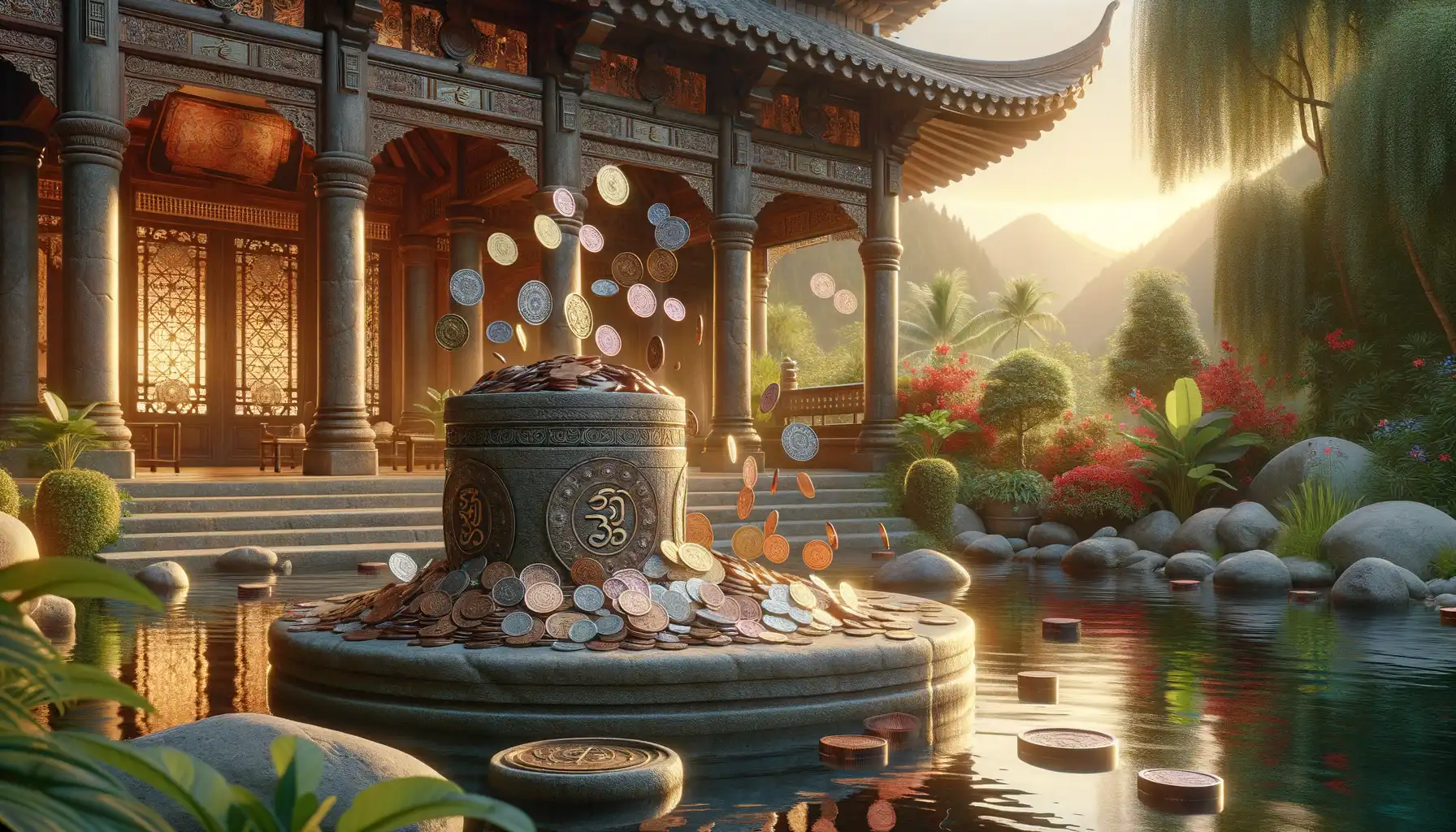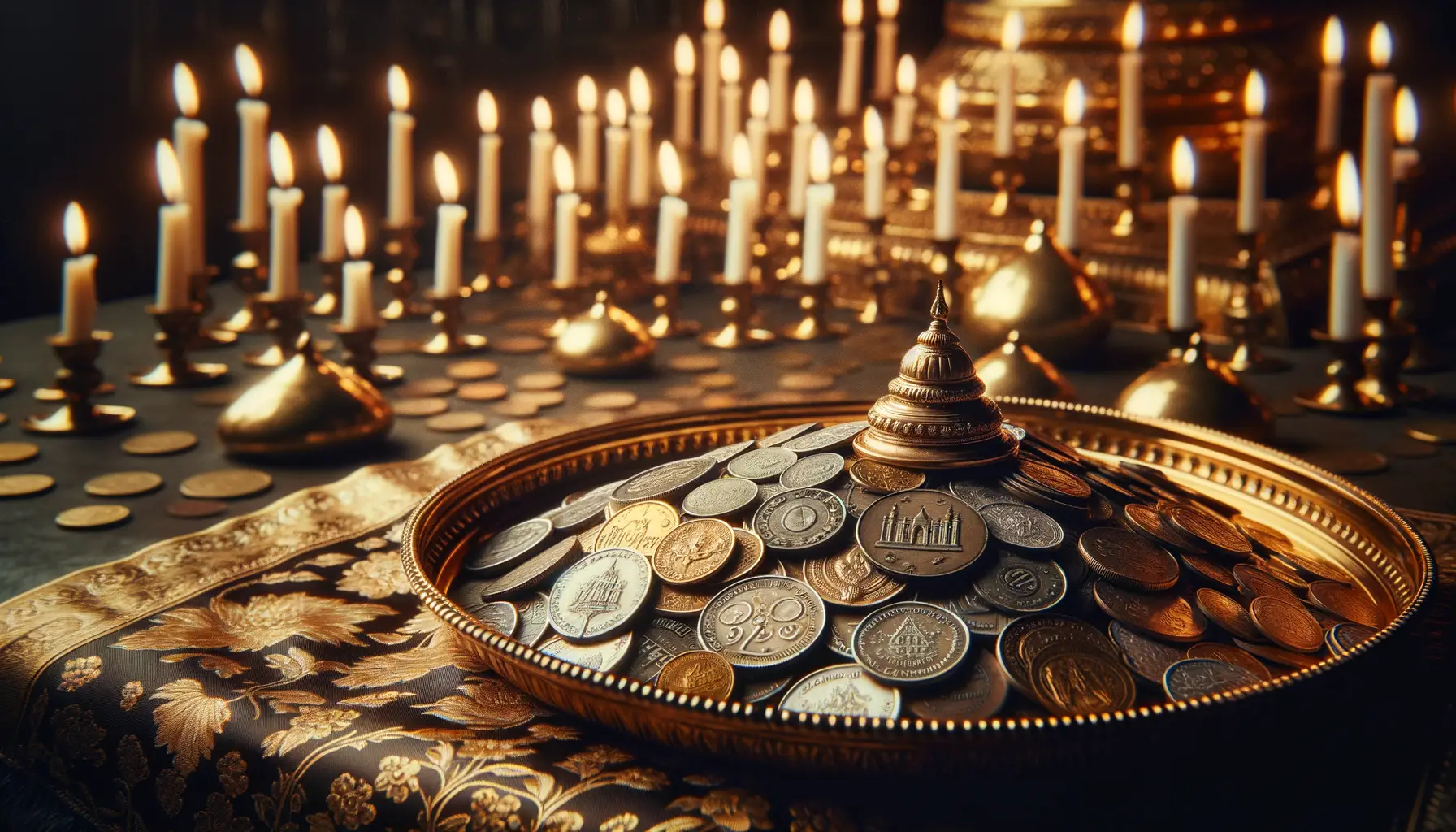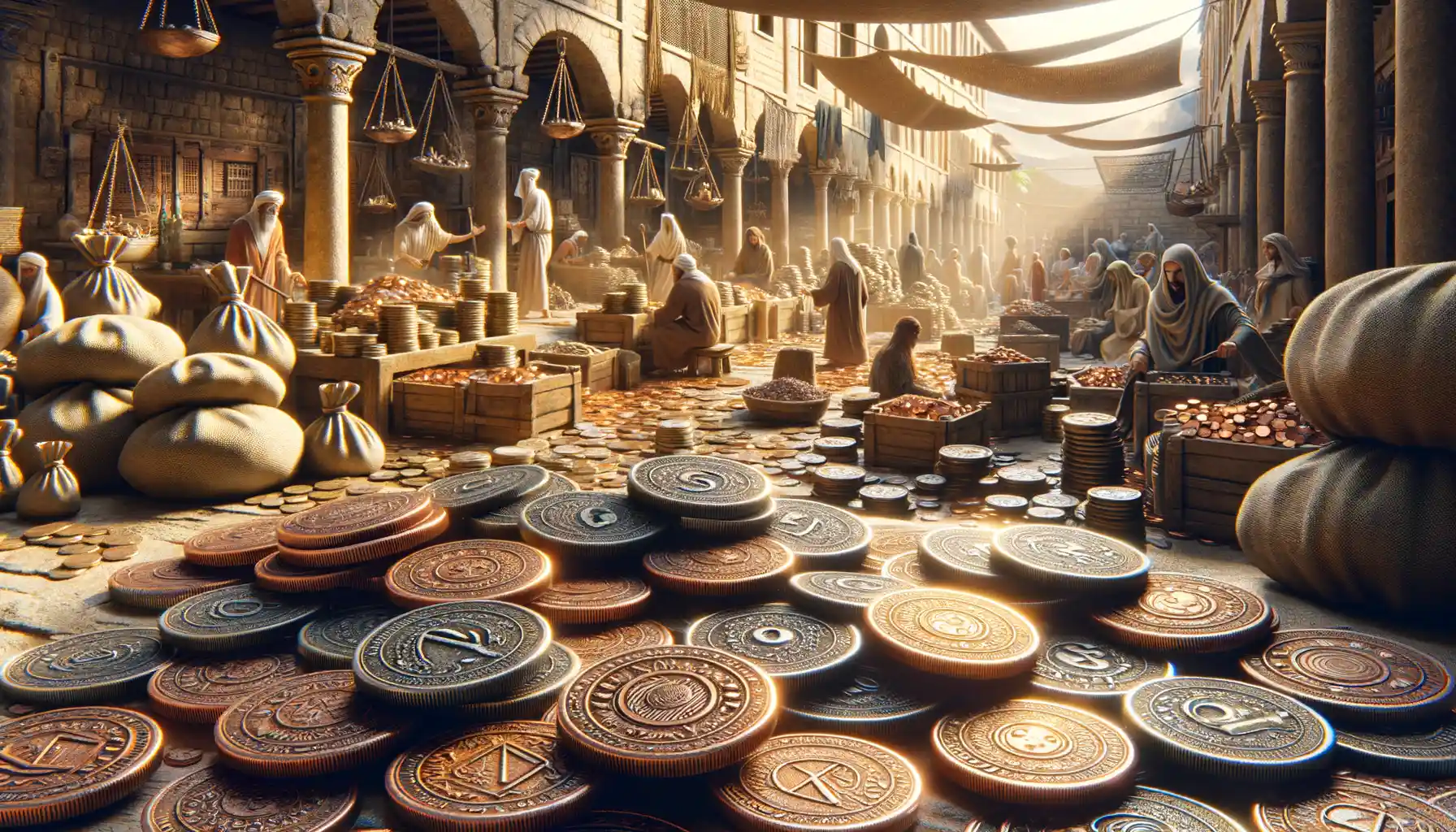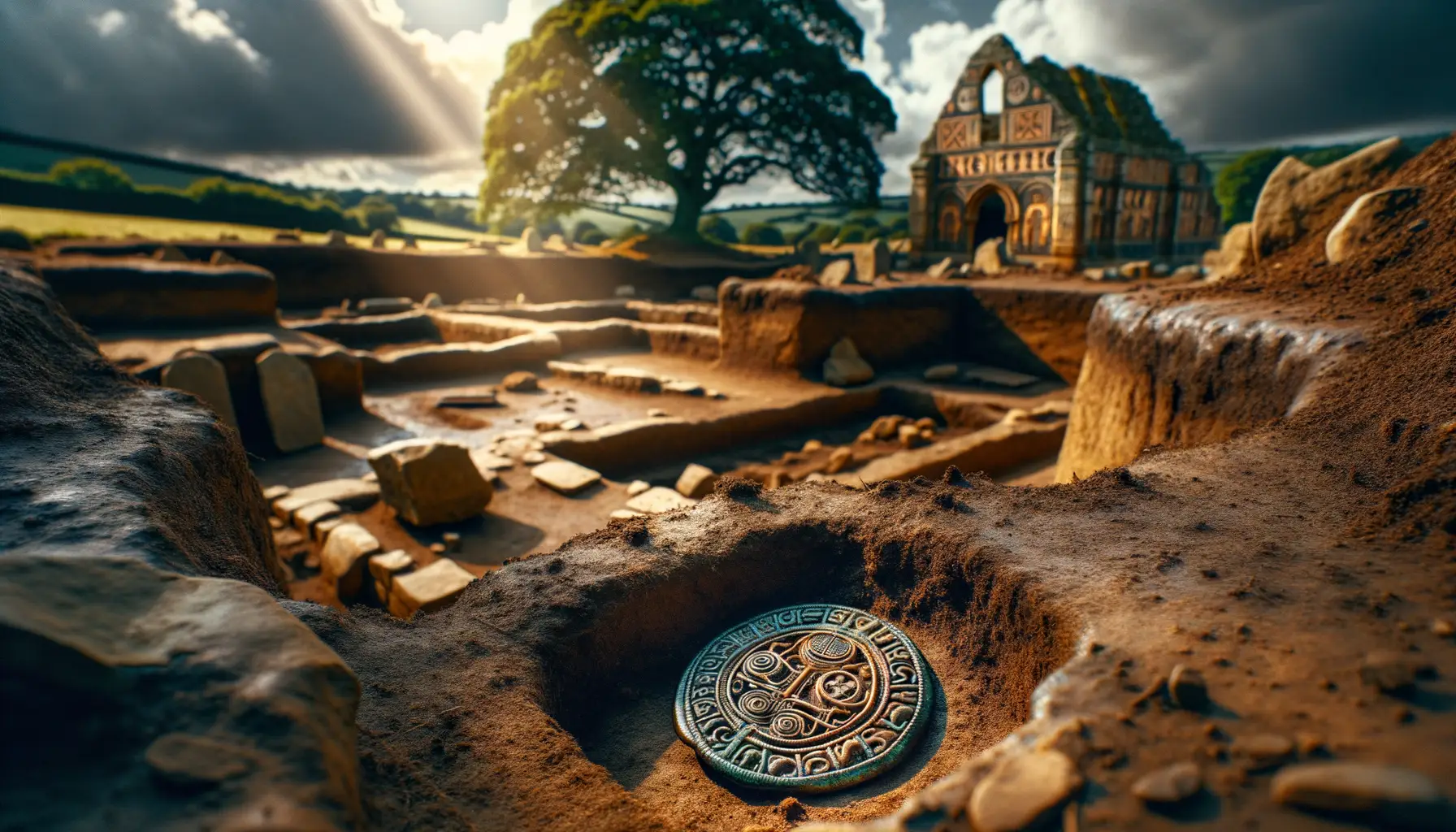Historical Significance of Coins in Ancient Healing Practices
Coins as Symbols of Hope and Healing
Did you know that coins in ancient healing practices weren’t just seen as currency? They were brimming with symbolism, carrying the hopes, fears, and aspirations of those seeking wellness. Imagine a weary traveler, clutching a small, polished bronze coin, whispering a silent prayer before tossing it into a sacred spring. That simple act wasn’t about spending—it was about believing.
In ancient spa cultures, coins often served as tangible wishes. People would travel miles to visit healing sanctuaries like those of Asclepius, the Greek god of medicine, where pools shimmered with offerings. A coin could symbolize gratitude for a recovered loved one or a plea to cure an ailment. These small tokens held immense emotional weight.
- Coins were sometimes marked with images of deities, reinforcing their connection to divine intervention.
- They were offerings left at altars, dropped into therapeutic baths, or buried near sacred trees believed to hold healing powers.
Whether gold, silver, or humble copper, these coins were more than metal—they were promises to the universe, imbued with faith, longing, and the timeless human desire to be whole.
Cultural and Spiritual Meaning of Coins at Healing Resorts

The Symbolism of Coins in Healing Sanctuaries
Why do coins hold such deep meaning at healing resorts? They’re not just bits of metal; they are stories, wishes, and whispers from the past. Picture this: a traveler approaches a sacred spring after weeks of arduous journeying. In their palm rests a coin—not mere currency, but a token of hope, gratitude, or faith. Tossing it into the water isn’t just an act; it’s a conversation with the divine.
Coins were believed to carry energy, infused with a person’s fears, dreams, and prayers. Resorts dedicated to gods like Asclepius, the Greek deity of healing, were often mosaicked with coins left by seekers looking for physical or spiritual renewal. These coins became vessels connecting mortals to celestial powers. How fascinating is that?
Rituals and Personal Symbols Imprinted on Coins
Ancient coins weren’t bland disks. Their engravings told tales of empires, deities, and even personal vows. Some were crafted with imagery symbolizing protection or health—think laurel wreaths or the staff of Caduceus. People would bring coins stamped with their personal intentions to boost their spiritual “signal.”
- Coins inscribed with the names of gods reflected devotion.
- Some visitors even melted jewelry to create custom offerings, ensuring no wish was left unheard.
These coins were more than objects—they bore memories, emotions, and a spark of faith that transcended time.
Coins as Offerings and Their Role in Rituals

The Sacred Spark: Coins in Ancient Rituals
Ancient healing sanctuaries weren’t just places of rest—they were alive with rituals. And at the heart of these ceremonies? Coins, small yet powerful symbols. Imagine holding one, feeling its cool metal on your fingertips as you whisper a prayer or set an intention. These coins weren’t simply currency; they were the bridge between the tangible and the divine.
Ritual offerings often began with a simple act: placing a coin into sacred waters, under temple altars, or even embedding them within walls. Why coins, you ask? Because they shimmered like promises. Their weight symbolized commitment; their form, eternity. Offerings like these weren’t random—they were deeply personal gestures. A coin might carry the hopes of a childless couple, the gratitude of the healed, or a plea to soothe lingering pain.
- In some sites, such as ancient Greek healing temples, coins were dedicated to deities like Asclepius, the god of healing.
- Other cultures tossed them into springs and believed the ripples carried their prayers skyward.
Each coin told a story. Each offering echoed with humanity’s desire for connection—between body, spirit, and the mystical forces that governed both.
Economic Impacts of Coins in Ancient Wellness Tourism

The Financial Ripple Effect of Coins in Ancient Spa Destinations
Step into the world of ancient healing sanctuaries, and you’ll quickly notice something remarkable: the flow of coins wasn’t just about transactions—it was the lifeblood of wellness tourism. These tiny, circular tokens didn’t just pay for treatments; they fueled entire local economies with a ripple effect that touched every corner of the community.
In bustling hot spring towns like ancient Epidaurus or Pergamon, visiting pilgrims carried coins as their ticket to healing experiences, creating an economic dance that benefited more than just the sanctuaries. Let’s unpack this:
- Coins funded the maintenance of sacred bathhouses, mineral pools, and asclepieia (healing temples).
- Vendors near these sites thrived—think sellers of clay offerings, herbal concoctions, or even hand-carved amulets.
- Travelers spent heavily on food, lodging, transportation, and, of course, small gifts for the gods!
Imagine this: a single coin dropped in an offering bowl didn’t stop there. It might pay a mason carving intricate statues, support a farmer delivering fresh figs to pilgrims, or fund a priest spreading word of the site’s miraculous cures. In essence, these coins were the ancient world’s version of economic multitaskers, spinning opportunity wherever they landed.
Coins as Catalysts for Local Prosperity
It’s fascinating how wellness tourism became a win-win for both visitors and host communities. Take Delphi, for instance, where coins unearthed tell stories of thriving trade networks. The presence of foreign currency—Persian darics, Roman denarii, or Greek drachmae—not only showcased the global allure of these destinations but also bolstered local economies. Merchants eagerly exchanged goods for rare coins, while blacksmiths melted down unusual currencies into new ones, adding value at every turn.
Even more captivating? Coins acted as a historical record of health-seekers from different regions—proof that spas and healing centers didn’t just heal bodies but connected worlds. Each minted piece wasn’t just money; it was a storyteller, linking far-off empires through commerce, faith, and the pursuit of well-being. Truly, coins in these sanctuaries were more potent than meets the eye!
Archaeological Discoveries Linking Coins to Healing Sites

Fascinating Finds: Coins Embedded in Ancient Healing Stories
Picture this: you’re walking amidst ancient ruins, your fingers brushing over centuries-old stone, when suddenly, a glint of metal catches your eye. Those coins, small and unassuming, have whispered secrets through the ages—secrets that connect them to sacred healing sites. Archaeologists have uncovered such treasures time and time again, revealing how profoundly these spaces resonated with ancient visitors seeking solace.
Often, coins are unearthed near what once were bustling healing sanctuaries—think mineral springs, steam temples, or even sacred pools dedicated to gods like Asclepius, the Greco-Roman deity of medicine. These coins weren’t just currency; they transcended their monetary value, turning into heartfelt offerings. Some were tossed into water as wishes, while others were meticulously placed on altars to honor local deities.
- In Roman Britain, silver coins were found at Bath’s sacred spring, shining proof of rituals tied to thermal waters.
- At Epidaurus, the sanctuary of Asclepius, coins depicting snakes—symbols of healing—were discovered interwoven with temple foundations.
Each discovery pulls us deeper into the mindsets of these ancient seekers. They weren’t just paying homage—they were leaving pieces of themselves behind, hoping for divine intervention. If coins could speak, imagine the stories they’d tell!
